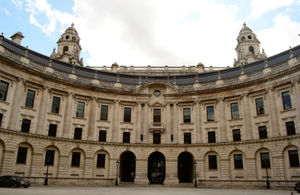Reports reveal treasures unearthed by the public
Finds in 2011 up by eight per cent

Iron Age objects and hoards of coins are among the archaeological discoveries which are reported by members of the public to a DCMS-funded scheme to record these finds.
The annual Portable Antiquities report and Treasure report, published today, show that 97,509 finds were recorded by the Portable Antiquities Scheme (PAS) in 2011 - eight per cent more than in 2010.
“It never ceases to amaze me that such incredibly important objects have survived in the ground for many hundreds of years, waiting to be found by everyday people,” Culture Minister Ed Vaizey said.
“Not only are these objects extremely exiting discoveries, but once reported as Treasure or recorded with the Portable Antiquities Scheme they have great potential to rewrite the history of this country, and enrich local and national museums.”
In July this year the ITV show Britain’s Secret Treasures highlighted some of the finds recorded through the PAS.
“The ITV series this year shows just how much these finds have captured the public’s imagination and changed our understanding of the past, said Neil MacGregor, Director of the British Museum. “It is a scheme which is envied the world over. I am very grateful to the Department for Culture Media and Sport for continuing to support the scheme.”
New discoveries
Exciting recent finds highlighted at this year’s report launch include:
- An extremely rare late Iron Age helmet from near Canterbury, Kent, found by a metal detectorist in October 2012, which had been used as a vessel to hold a human cremation.
- The second largest hoard of Roman gold coins ever found in Britain (pictured), picked up by a metal detector on a site near St Albans, Hertfordshire.
- An important hoard of Viking Age gold and silver metalwork found in North Yorkshire in May 2012 which included silver collars and neck-rings, a silver brooch and a sword pommel inlaid with gold foil plaques.
- A copper-alloy mount in the form of a boar associated with Richard III, which was found on the Thames foreshore.